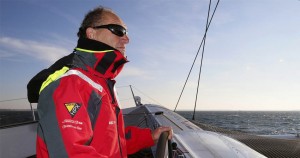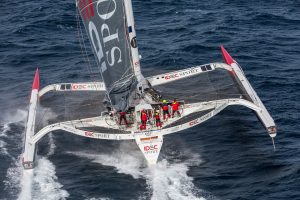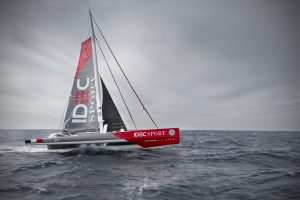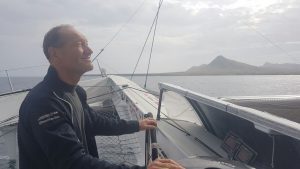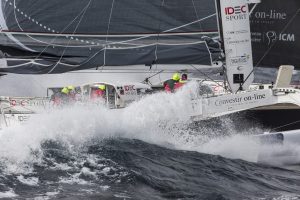On Thursday 8 December 2016 at 02 hours 20 minutes (French time), Thomas Coville, skipper of the trimaran Sodebo Ultim’, reached Cape Horn 4 days and 59 minutes ahead of the time set by Francis Joyon, holder of the solo round-the-world record since 2007.
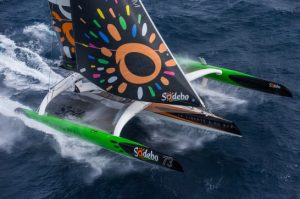
Record solo Pacific crossing
This is the first time that a sailor has singlehandedly crossed the Pacific Ocean so quickly. Thomas Coville therefore set a new speed record this morning by achieving a solo Pacific crossing in 8 days, 18 hours, 28 minutes and 30 seconds (subject to approval and ratification by the WSSRC – World Sailing Speed Record Council).
He crossed the ocean’s 5,429 miles – in other words, 10,064 kilometers – at an average of 25.8 knots.
To get from the southern tip of Tasmania to Cape Horn, the skipper of Sodebo Ultim’ needed only 10 minutes more than Orange II, Bruno Peyron’s catamaran measuring nearly 40 meters which, in 2005, took 8 days and 18 hours with 14 men on board. And 39 minutes less than Groupama 3 in 2010, whose 10-man crew included Thomas Coville at the time.
Ushant – Cap Horn at high speed: a new reference time
Departing from Ushant on Sunday 6 November, Thomas Coville took 31 days, 11 hours, 30 minutes and 8 seconds to round the last of the three major capes on this circumnavigation route, after the Cape of Good Hope and Cape Leeuwin in Australia’s south.
With an average speed of 25.33 knots, the Sodebo Ultim’ skipper has set a new solo reference time between Ushant and Cape Horn. He has sailed 19,142 miles since his departure – in other words, 35,450 km. He now has a straight-line distance of 7,000 miles to cover until Ushant. To beat Francis Joyon’s record, he’ll need to get back to Brest by 3 January 2017 at 04 hour 23 min 57 seconds (French time).
Source : www.sodebo.com



